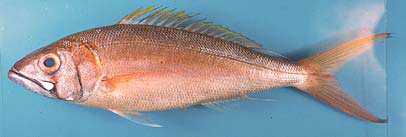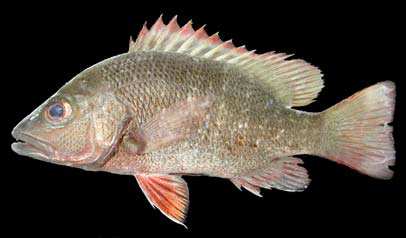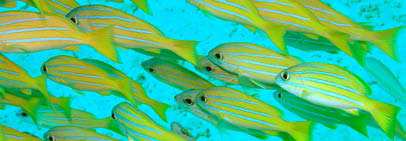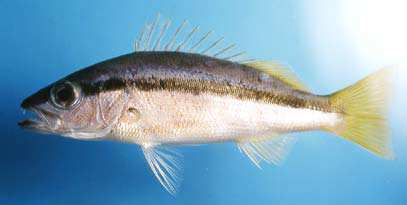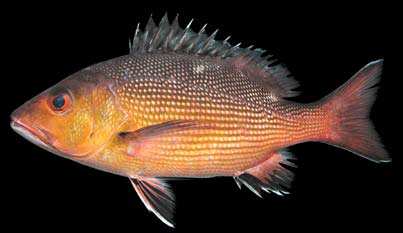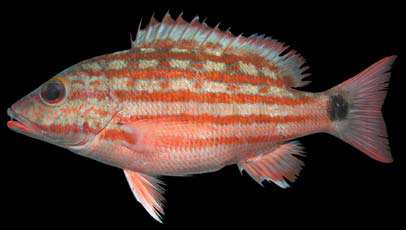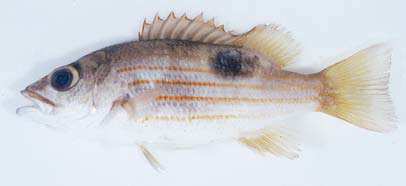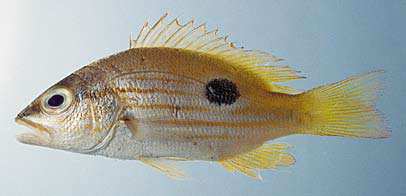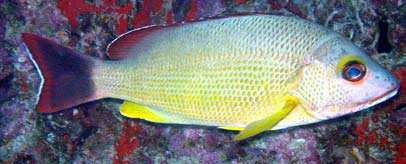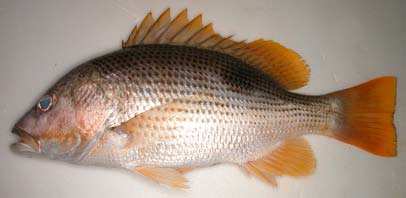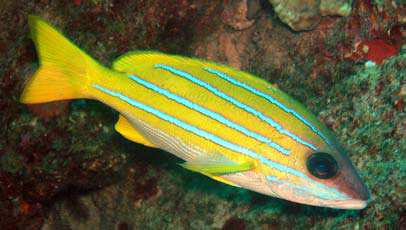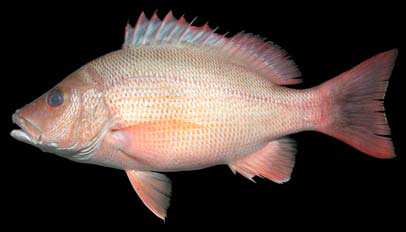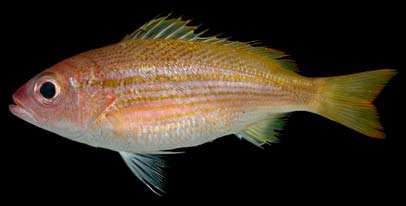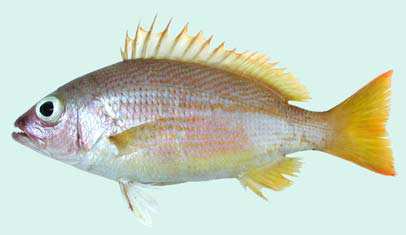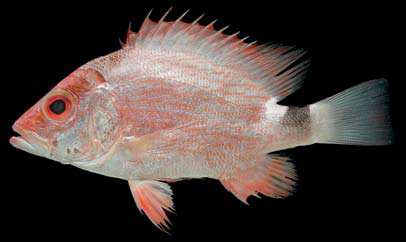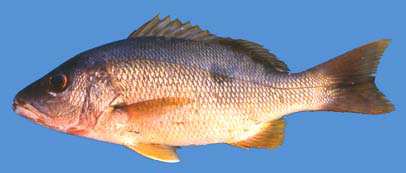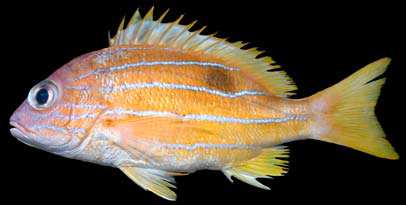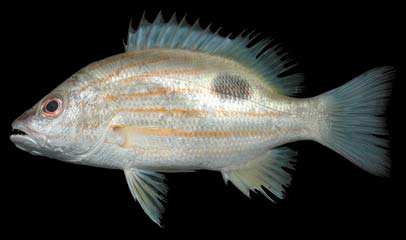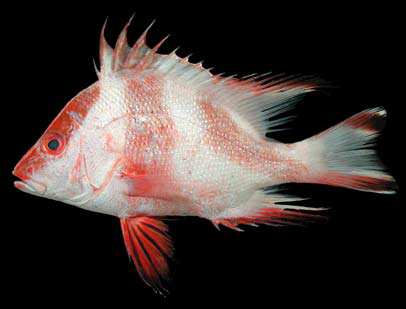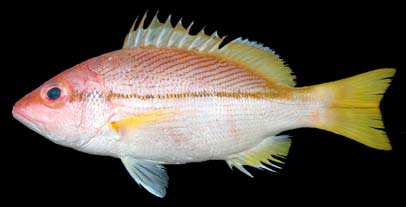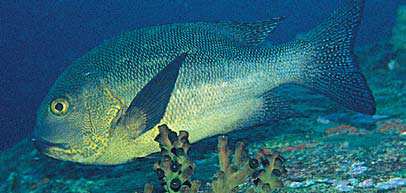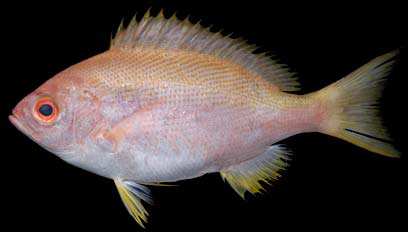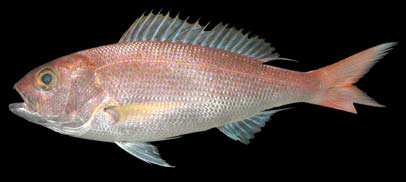LUTJANIDAE
Snappers
By Yukio Iwatsuki and Ukkrit Satapoomin
|
Typical perch-like fishes, oblong in shape, moderately compressed (size to 160 cm). Eye usually moderate; premaxilla usually moderately protrusible; mouth terminal and fairly large; maxilla slipping for most or all of its length under lachrymal when mouth closed; jaws bearing enlarged canine teeth; vomer and palatines usually with teeth. Scales moderate to rather small ctenoid; cheek and operculum scaly; maxilla with or without scales; snout, lachrymal, and lower jaw naked. Dorsal fin continuous or slightly notched, with X-XII spines and 10-19 soft rays; anal fin with III spines and 7-11 soft rays 7-11; pectoral fin rays 14-19; pelvic fins with I spine and 5 soft rays, originating just behind pectoral base. Branchiostegal rays 7. Vertebrae 24 (10 + 14). Color: highly variable; mainly from red through yellow to blue; often with blotches, lines, or other patterns. Similar families occurring in the area. Caesionidae: mouth small; premaxillae extremely protrusible; teeth small and minute; caudal fin deeply forked, with pointed lobes. Haemulidae: scales present on snout and lachrymal, those in lachrymal often embedded; preoperculomandibular canal lateral system opening under chin through median longitudinal groove or enlarged pores or both; usually no teeth on vomer and palatines; vertebrae 26 or 27. Lethrinidae: opercular membranes broadly united to each other; preopercular margin typically smooth; branchiostegal rays 6; soft rays in dorsal fin 9 or 10; no teeth on vomer or palatines; most species lack scales on cheek; lips frequently fleshy. Nemipteridae: preopercular margin typically smooth; soft rays in dorsal fin 9; soft rays in anal fin usually 7, rarely 8; branchiostegal rays 6; no teeth on vomer or palatines. Sparidae: preopercular margin typically smooth; branchiostegal rays 6; teeth in jaws variable-conical, incisiform, or molariform. Remarks. Generally bottom-associated fishes, occurring from shallow inshore areas to depths of about 500 m, mainly over reefs or rock outcrops. Active predators, mostly nocturnal, feeding on crustaceans, mollusks, and fishes; several are planktivores. |

|
|
